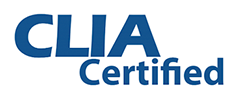Prenatal diagnosis of fetal chromosomal abnormalities has evolved significantly over the last 30 years. In the early days of fetal testing, amniocentesis or chorionic villus sampling (CVS) was used to obtain fetal cells to determine the genetic make-up of the fetus and more recently small amounts of DNA can now be examined for the diagnosis of various fetal disorders.
Amniocentesis has been around more than 60 years to diagnose fetal abnormalities and allows genetic testing of fetal cells obtained from the amniotic fluid. Today, it is still one of the most commonly used methods to diagnose Down’s syndrome or other chromosomal and genetic disorders during pregnancy. It’s typically performed between 15-18 weeks of gestation and considered to be over 98% accurate. If a genetic abnormality or Down’s syndrome is detected, a second trimester termination is typically offered immediately following diagnosis.
Chorionic villus sampling was introduced in the 1970s and utilized to screen for chromosomal abnormalities. It allows earlier detection of fetal problems (10-12 weeks) and is a good alternative to amniocentesis. Its limitations are the need for a high risk obstetrician with advanced skills to perform the procedure and the fact that it does not allow testing for alpha fetoprotein level and neural tube defects. The major benefit is making the diagnosis earlier and if chosen, the option of terminating the pregnancy sooner with better safety. Its accuracy has been shown to be similar to amniocentesis.
Maternal serum measurement of alpha fetoprotein “AFP” was introduced as a screening tool for Down’s syndrome in the 1980s when low AFP levels were reported to be associated with Down’s syndrome. The addition of human chorionic gonadotropin (HCG) and estriol measurements in the 1990s (“Triple Screen”) in addition to AFP levels increased the sensitivity (70%) for the detection of Down’s syndrome as well as Trisomy 18 and became a standard non-invasive screening test. The addition of Inhibin A measurements increased the sensitivity of the test to 80% and was called the “Quadruple Screen”. Down’s syndrome pregnancies typically had low AFP, low estriol and high HCG and Inhibin A levels compared to healthy pregnancies. Quadruple screening can only be used in the second trimester and both false positive and false negative test results have been reported.
A significant association between the extent of fluid collection in the back of the fetal neck called “nuchal translucency – NT” and the risk of Down’s syndrome was reported in the late 1990s. An increased measurement of NT has been shown to be associated with a number of chromosomal abnormalities, although its variability in the detection ability has limited its wide use. This was overcome by incorporating the levels of HCG and pregnancy associated plasma protein A (PAPP-A) into the risk calculation. HCG levels tend to be higher and PAPP-A levels lower in Down’s syndrome, especially with a thick NT. The sensitivity of the test has been reported to be 90% which is much higher than previously utilized screening methods for Down’s syndrome. NT and hormone measurements can only be done at the end of the first trimester (11-14 weeks) for most accurate results.
A newer approach is the integrated screening which combines information from both first and second trimester screening tests and has been reported to be more sensitive in detecting Down’s syndrome (90-95%). The advantage of such an approach is to avoid performing CVS or amniocentesis for false positive test results. The disadvantage is delaying diagnosis, missing the option of doing CVS and possible first trimester termination, and increased patient anxiety with the delay in the screening process.
What’s the best test for prenatal screening?
Non-invasive tests such as first trimester screening or the quadruple screen have become the standard and the preferred screening tests during early pregnancy compared to the invasive tests such as CVS or amniocentesis. If one of these screening tests indicates increased risk, CVS or amniocentesis is recommended for prenatal diagnosis.
If the screening tests come back as low risk, that does not eliminate the risk of having Down’s syndrome, but rather decreases the risk to very low levels. There are reports of Down’s syndrome babies born following “negative” screening tests and even after “normal CVS or amniocentesis” results. Whereas the risk is significantly reduced with any of these tests, it is important to know that risk is never eliminated completely.
CVS and amniocentesis are invasive tests and may result in miscarriages 1-3% of the time, although some studies have suggested no increased risk. The sensitivity and accuracy of such invasive tests are approximately 99%. Given the complexity of screening methods, each case should be assessed based on risk factors, medical and obstetrical history and screening should be offered to all pregnant women.









